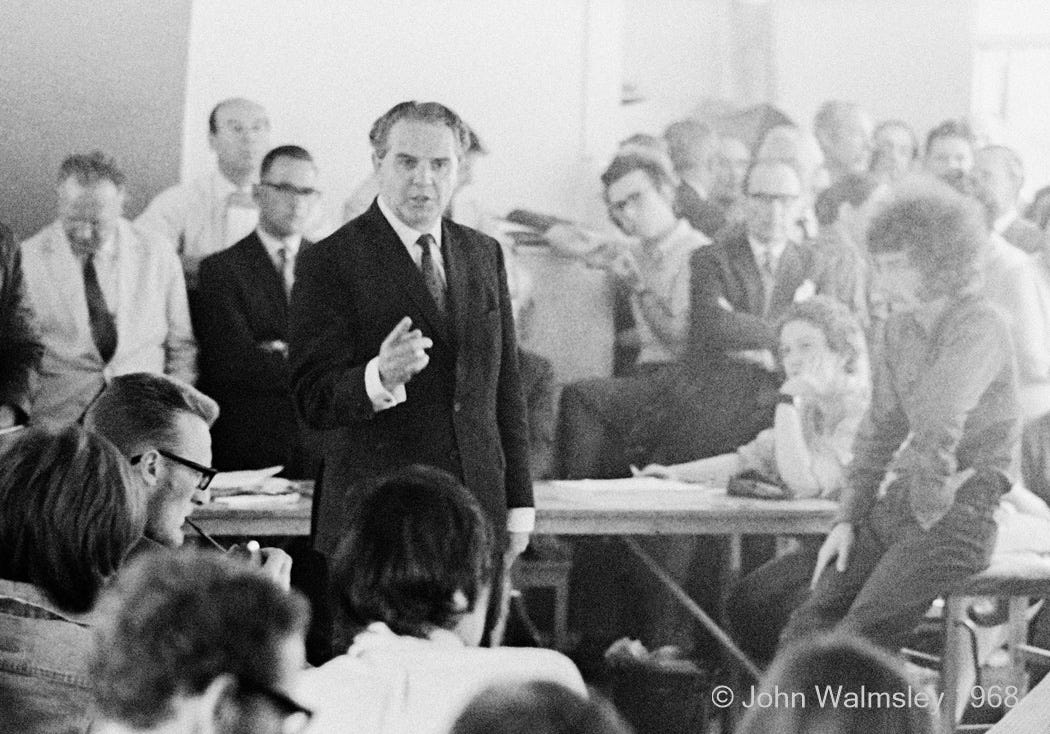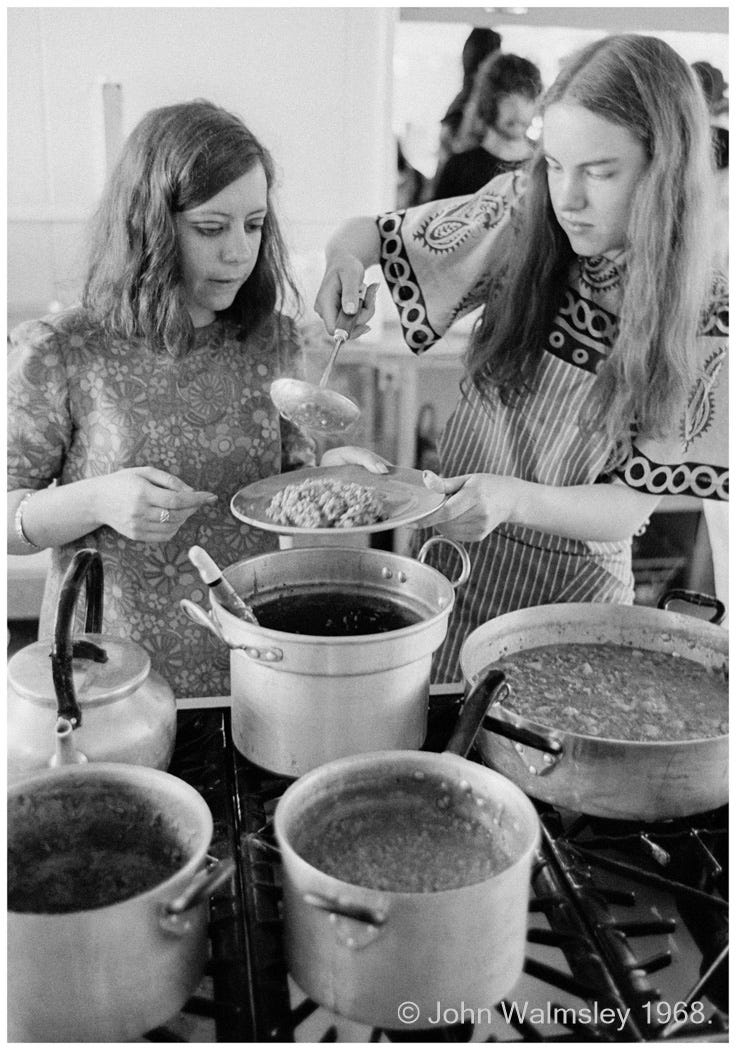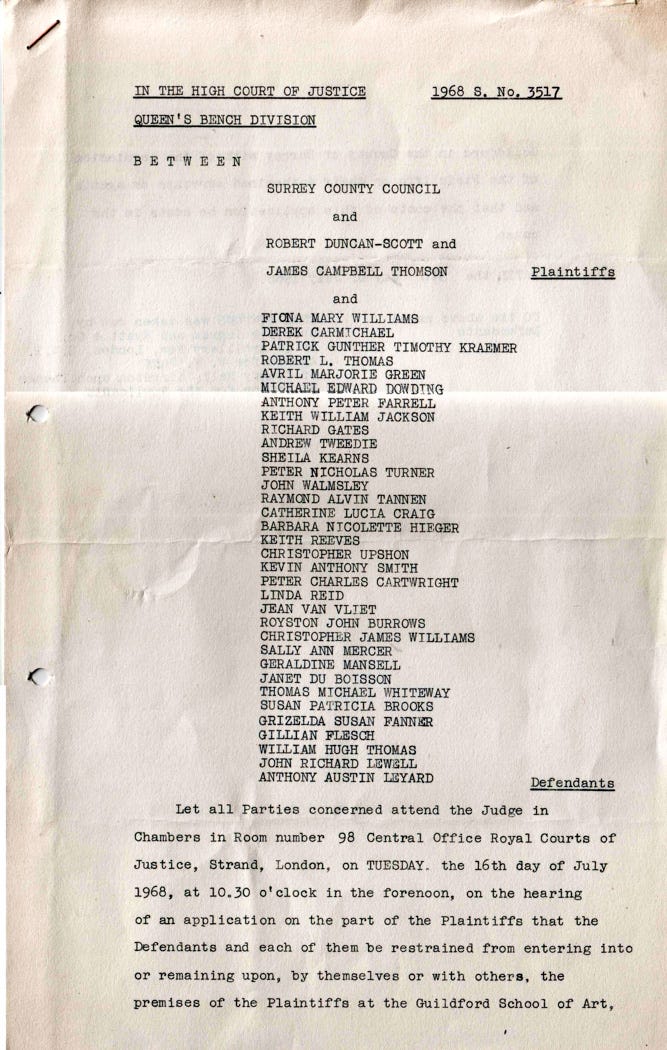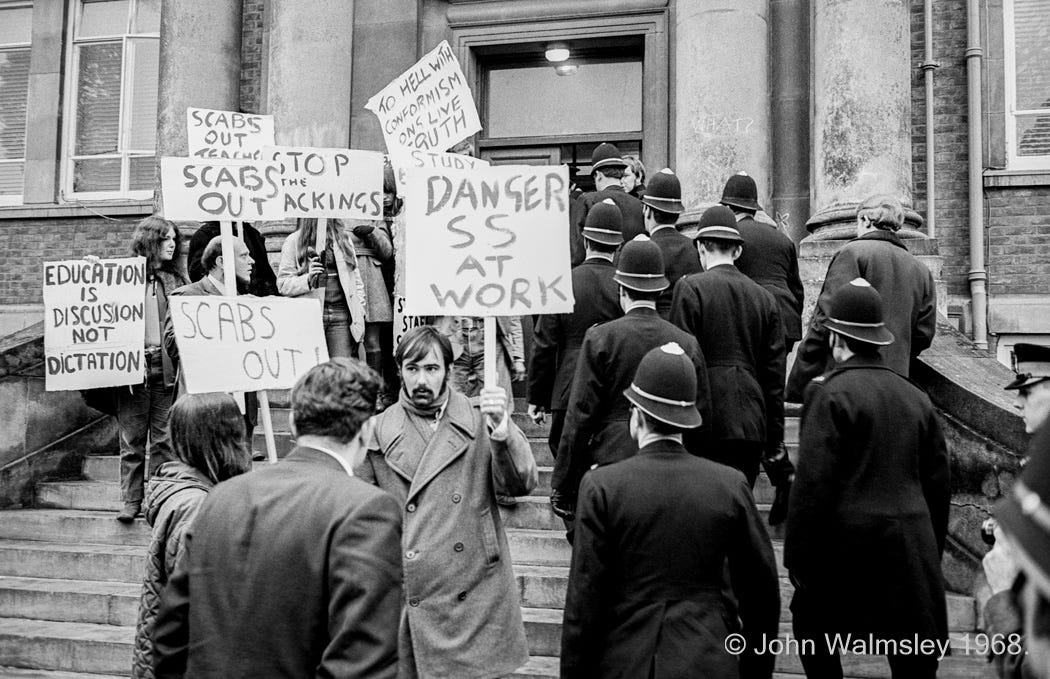Text and photographs © John Walmsley. All rights reserved.
This Sunday, the 16th July, is the 55th anniversary of the day I and many fellow students at Art School had to appear as defendants at the High Court.
In 1968, I was studying photography at Guildford School of Art, a known centre for photojournalistic work. The students all over the school found the courses restricting in that, after the Foundation year, you weren’t allowed to work on your projects in other departments. If I wanted to do some painting, for instance, I couldn’t and had to stay in my own department. Very tidy in theory, but a real dampener on artistic expression. We students tried to talk with the governors about our ideas to improve the situation but they wouldn’t discuss it seriously with us. The message seemed to be, they were in charge and students must follow their ‘rules’. So, in early June, we began a sit-in to protest.
We spent the days discussing what we called the Network System, which would allow much more freedom to sometimes work in other departments. Many of the part-time and some full-time staff supported us.
Vice-Principal adressing the students. It’s amazing how much a finger can convey.
As time went on, we refined our ideas, refused to give in and took over the whole building. We had letters of support from a great many world-class artists (Anthony Caro, Richard Hamilton, Dame Barbara Hepworth, David Hockney, Henry Moore, Eduardo Paolozzi, Bridget Riley, Graham Sutherland etc.) so felt that what we were doing was recognised as worthwhile.
We prepared and cooked our own food (OK, Cordon Bleu, it wasn’t) and kept the place clean and in good shape.
At one point, the Council cut off the electricity in an attempt to get us out of the building but we carried on working by candlelight and tilley lights.
Many of us simply lived in the building, sleeping wherever we could.
This is the summons we received to appear on 16th July at the Royal Courts of Justice (RCJ), in London. After the hearing, we had to accept our only choice was to peacefully vacate the building, which we did on 29th July.
During the summer break, 40+ of the staff who had supported us were either sacked or their contracts were not renewed. These were forward looking and capable people with families and bills to pay so it was a really difficult time for all. Others, known as ‘Scabs’, took their jobs.
In October, there was a huge march to Hyde Park where we had speeches and a rally, having presented a petition to Edward Short, Minister of Education, on the way.
In December, the sacked staff were given free use of a Piccadilly gallery for a show of their own work to raise funds and keep the issue in the public eye. John Lennon & Yoko Ono came to offer their support.
We never did succeed in having serious talks with the governors leading to change but, and it’s a BIG BUT, the Minister of Education announced that, from then on, all schools, colleges and universities must invite students and staff onto their Advisory Boards, something we still have today. So, a much bigger result than we’d set out to achieve.
New book.
I photographed the events start to finish from the inside and Claire Grey, another student, kept a day-by-day diary of events and of who said what and what happened. We are currently preparing a new book about it for publication in the autumn.
I left the art school with no qualifications.
For my final exams, I had said I’d submit a particular piece of work but, when the sit-in began and became of national importance, I decided to submit these photos instead as they were far more interesting and showed the entrepreneurial and journalistic skills the school had supposedly been teaching me. The school saw it differently and failed me. It wasn’t all lost, though. A story I’d shot during my final year about A S Neill and his democratic school, Summerhill, was published as ‘Neill & Summerhill: a man and his work’, a Penguin Education Special, the following year.
End note.
I wasn’t one of the student leaders but did feel things needed to change. Many times since then, I’ve complained, protested and fought for change where it was needed. It’s worth doing.
The internet has encouraged and enabled people to copy and use any imagery they see on the web expecting no-one would mind and, if they do, nothing much would happen. When my photographs are used without permission or payment, it’s an infringement of my intellectual property and is unlawful. If the infringer refuses to pay the fees due for the use they’ve already had, I begin legal action and we could end up in court. Guess where the cases are heard? Yes, in the same Royal Courts of Justice where I had been a defendant all those years ago. It’s funny how things turn out.













Absolutely fascinating John. Great you all had the gumption to do this for the benefit of those that followed. However, I wonder how the new bill that curtails protests would affect something like that today? You mentioned that forward-looking and capable people were sacked, perhaps then it's no surprise that those who took their jobs, 'the scabs' failed you on submission of the work? Narrow, small minded and backward-looking.